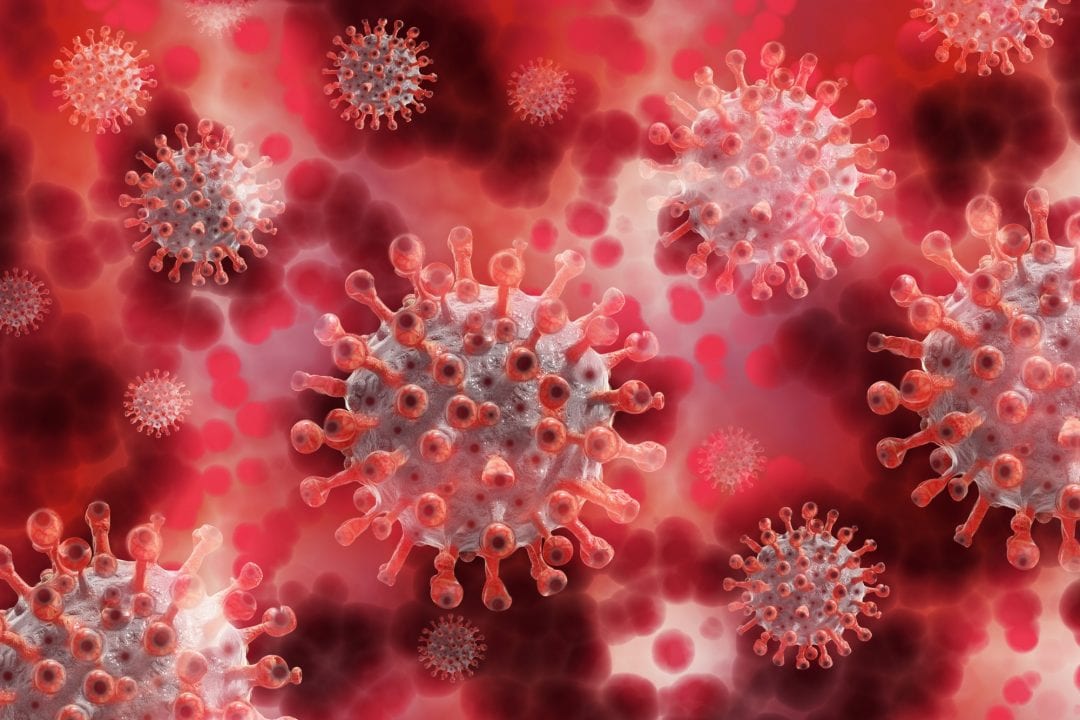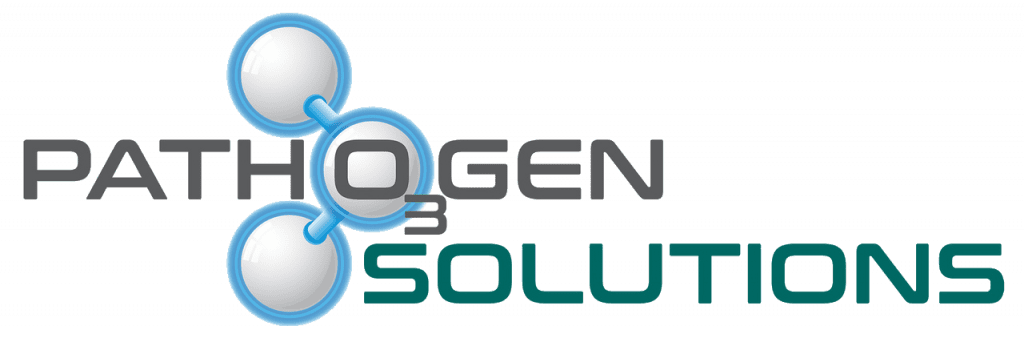Why Offering Shoe Sanitizing Helps Reduce Microbial Spread

When the COVID-19 pandemic hit in March of 2020, many of us became a lot more aware of the germs we carry and spread throughout our day. We wash our hands, wear masks, and wipe down surfaces a lot more often. But one important area often gets left out of our sanitization routines: the soles of our shoes.
Shoe sanitizing is a crucial part of preventing the spread of COVID and other dangerous diseases. Read on to learn about UVC and ozone sanitization and how it can keep your business cleaner.
How COVID (and Other Microbes) Spread
Before we dive into why sanitizing your shoes is important, let’s talk some about how microbes, specifically the COVID-19 virus, spread. We carry billions of germs around with us every day; they live on our clothes, in our hair, and on our skin. Every time we touch a surface, germs transfer from our bodies onto that surface.
In the case of the COVID-19 virus, the virus lives in an infected person’s lungs. Every time they talk, sing, cough, sneeze, or even breathe, millions of particles travel on the respiratory droplets they expel to any nearby surface. This is why wearing a mask is so important – if an infected person wears a mask, those respiratory droplets and the virus they carry get contained.
How Your Shoes Contribute
As you might expect, those virus particles and other microbes sometimes land on the floor and the ground outside. Depending on the particular organism, these germs could last for days or even weeks on these surfaces. And in areas of high traffic, the ground may be constantly reinfected.
We can wear a mask, wear gloves, wash our hands, and avoid touching surfaces, but none of us can avoid our feet touching the ground. Everywhere you go, your shoes bring along some of those microbes and virus particles from the ground you walk on. You then track these into new spaces, potentially reinfecting them after they’ve been sanitized.
Challenges of Sanitizing Shoes
When our hands are contaminated with germs, we wash them or use hand sanitizer. We can launder infected clothes, masks, and linens to remove viral particles. So why do shoes need special treatment when it comes to sanitization?
For one thing, many shoes aren’t washable with traditional methods; you’re not exactly going to throw your Louboutins in the washing machine. And you also can’t spray shoes down with disinfectant and hope for the best. Aside from potentially causing damage to the shoes, many tread patterns have nooks and crannies that can harbor viruses and bacteria.
What Is UVC Light?
When you start looking into shoe disinfection methods, you’ll start running across mentions of UVC light pretty quickly. Ultraviolet-C light is a specific wavelength of light that exists beyond the visible spectrum. And as we’ll discuss more in a moment, it can be great for disinfecting hard-to-clean surfaces.
Ultraviolet light has a wavelength between 100 and 400 nanometers, shorter than the last color on the visible spectrum, purple. There are three classes of ultraviolet light: UVA, UVB, and UVC. The last and most helpful of these, UVC, has a wavelength between 100 and 280 nanometers, making it the shortest of all UV light wavelengths.
How Does It Sanitize?
You may recognize the term UV light because of its place in discussions about sunblock and skincare. You see, ultraviolet light can damage cells, especially in shorter wavelengths. While this is bad news for people trying to prevent skin cancer, it’s great news for people looking to disinfect surfaces.
Most viruses and bacteria die when they’re exposed to UVC light for any extended length of time. In particular, light with a wavelength of 265 nanometers is most effective for killing microbes. And because this method does not rely on a disinfectant making contact with a surface, it’s excellent for disinfecting shoes.
What Is Ozone?
The companies that go above and beyond on disinfection use ozone. Ozone is a form of oxygen that has an extra atom in its atomic structure. While the oxygen gas we breathe in every day has two atoms in its structure, ozone has three, making it unstable.
Ozone occurs naturally at extremely high altitudes in our atmosphere. Chances are you’ve heard of the ozone layer of the atmosphere which protects us from harmful radiation from the sun. As it happens, this gas may also help to protect us from the dangers of viruses and bacteria.
How Does It Sanitize?
In spite of the fact that we rely on it to keep us alive, oxygen is actually a very corrosive element. You may have heard about oxidation; this is effectively when oxygen strips materials of their electrons, causing them to rust, corrode, or otherwise break down. Because ozone is unstable, it oxidizes with even more fervor than O2, normal oxygen gas.
Ozone’s third atom will readily break off from its other two partners, grabbing electrons and free radicals from any nearby materials. It can pull apart viruses, bacteria, and just about anything else it comes in contact with. And because it takes much less time for ozone to destroy a virus than to destroy your shoes, it makes for an amazing disinfectant.
The Power of UVC and Ozone Together
The best shoe sanitizers in the world combine the power of UVC and ozone to kill nearly all microbes. Both of these methods are powerful enough to kill most microbes on your shoes on their own. But combining them provides an unbeatable level of sanitation and peace of mind.
UVC light will kill microbes on any surface it touches, covering most of the surfaces of your shoes. But ozone can reach the spots the UVC light can’t, including inside the tongue of the shoe, in nooks and crannies of the tread, and underneath shoelaces. With these two forces, coronavirus and other dangerous diseases will be hard-pressed to stick around on your shoes.
How the Sanitizer Works
So how does a UVC and ozone shoe sanitizer work anyhow? When you step onto it, it will light up, signaling the UVC light and ozone have begun to work on your shoes. You only have to stand on it for eight seconds before these two elements have done their work and you can step off.
Exposing your shoes to UVC light and ozone for eight seconds gives these two elements time to kill any bacteria or viruses lurking on your soles. But eight seconds is also not long enough for either UVC light or ozone to have an impact on your shoes. Your Air Jordans will be safe; coronavirus will not.
Benefits of Having It at Your Business
If you run a business, having these UVC and ozone shoe sanitizers around can literally make a life and death difference. For one thing, it can improve your sanitation measures by reducing the number of germs that make it into your facility in the first place. This helps to protect your customers and employees from deadly viruses.
But if you work in an industry where cleanliness is important, having shoe sanitizers can be crucial. They can help protect clean rooms in hospitals and labs, prevent you from passing diseases in long-term care facilities, and keep restaurants cleaner and more sanitary. They can also be important in high-traffic businesses like bars, malls, and public transit stations.
Where You Should Place These Sanitizers
If you plan to use UVC and ozone sanitizers at your business, there are a few strategic spots you should place them. Of course, primary building entrances and exits are great spots to put them. This minimizes the number of germs being brought into your facility to begin with.
You may also want to place these sanitizers at major points of transition throughout your business. In a hospital or long-term care facility, this may include entrances to different wings or in front of operating rooms. In a restaurant, a sanitizer outside the kitchen door may be a good idea, and public transport companies may want to place these at entrances to different platforms.
Discover the Benefits of Shoe Sanitizing
Since the start of the coronavirus pandemic, we’ve all become a lot more aware of the germs we carry with us every day. The soles of our shoes can be huge disease vectors, and shoe sanitizing can help minimize that transmission. UVC light and ozone sanitizers are the best on the market for killing as many germs as possible on the bottoms of your shoes.
If you’d like to get the best shoe sanitizers on the market, check out the rest of our site at Patho3gen Solutions. We can help you control the spread of harmful germs with shoe disinfection technology. Get a quote today and discover why our sanitizers are 110 times more effective than just UVC light alone.

